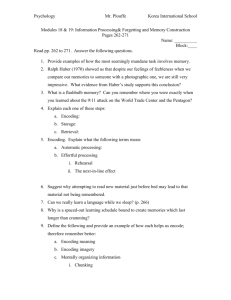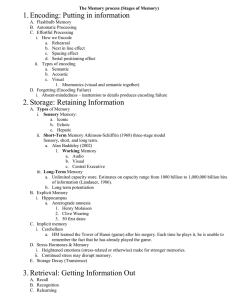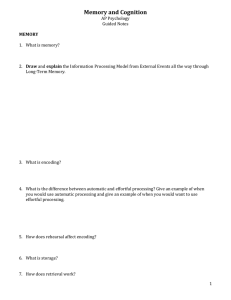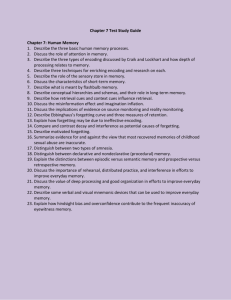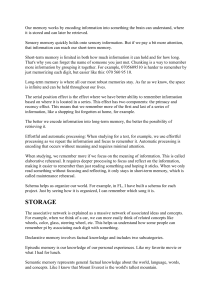MEMORY * CHAPTER 9 QUESTIONS
advertisement
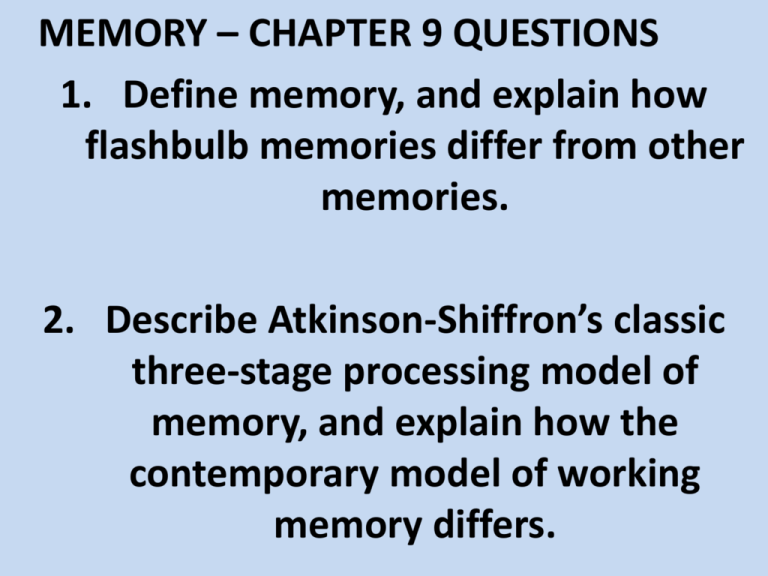
MEMORY – CHAPTER 9 QUESTIONS 1. Define memory, and explain how flashbulb memories differ from other memories. 2. Describe Atkinson-Shiffron’s classic three-stage processing model of memory, and explain how the contemporary model of working memory differs. 3. Describe the types of information we encode automatically. 4. Contrast effortful processing with automatic processing, and discuss the next-in-line effect, the spacing effect, and the serial position effect. 5. Compare the benefits of visual, acoustic, and semantic encoding in remembering verbal information, and describe a memoryenhancing strategy related to the selfreference effect. 6. Explain how encoding imagery aids effortful processing, and describe some memory-enhancing strategies that use visual encoding. 7. Discuss the use of chunking and hierarchies in effortful processing. 8. Contrast the two types of sensory memory. 9. Describe the duration and working capacity of short-term memory. 10. Describe the duration and working capacity of long-term memory. 11. Discuss the synaptic changes that accompany memory formation and storage. 12. Distinguish between implicit and explicit memory, and identify the main brain structures associated with each. 13. Contrast recall, recognition, and relearning measures of memory. 14. Explain how retrieval cues help us access stored memories, and describe the process of priming. 15. Discuss the role of encoding failure in forgetting. 16. Discuss the concept of storage decay, and describe Ebbinghaus’ forgetting curve. 17. Contrast proactive and retroactive interference, and explain how they can cause retrieval failure. 18. Explain how misinformation and imagination can distort our memory of an event.


